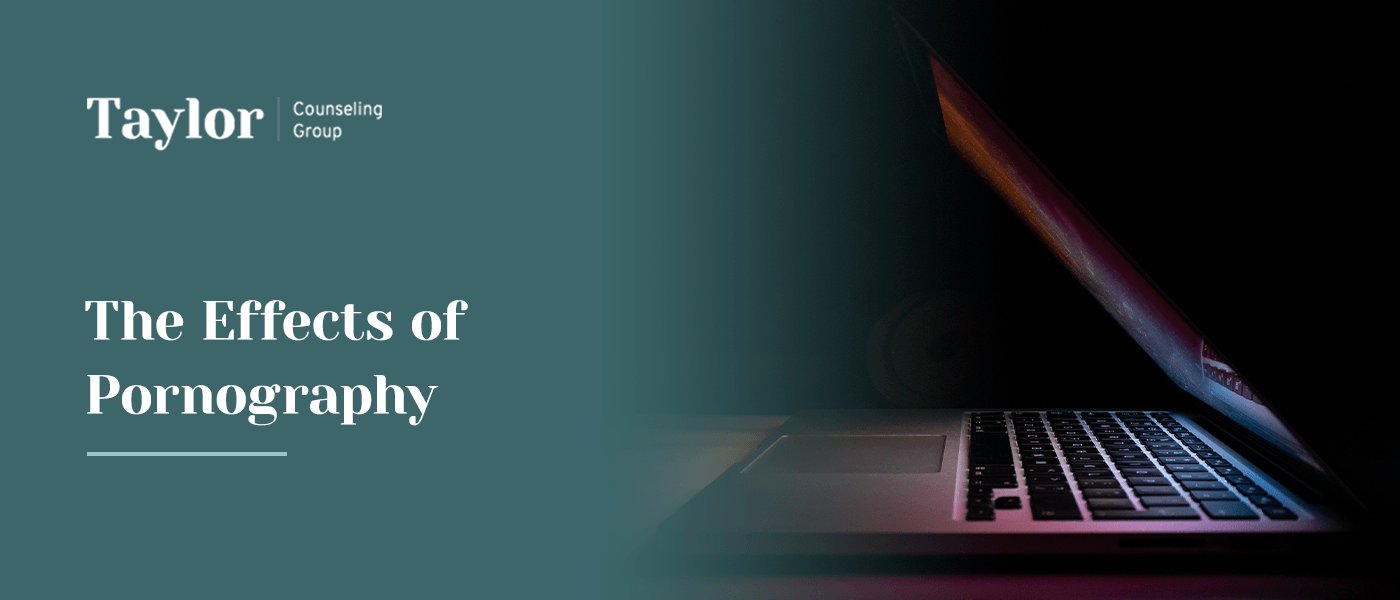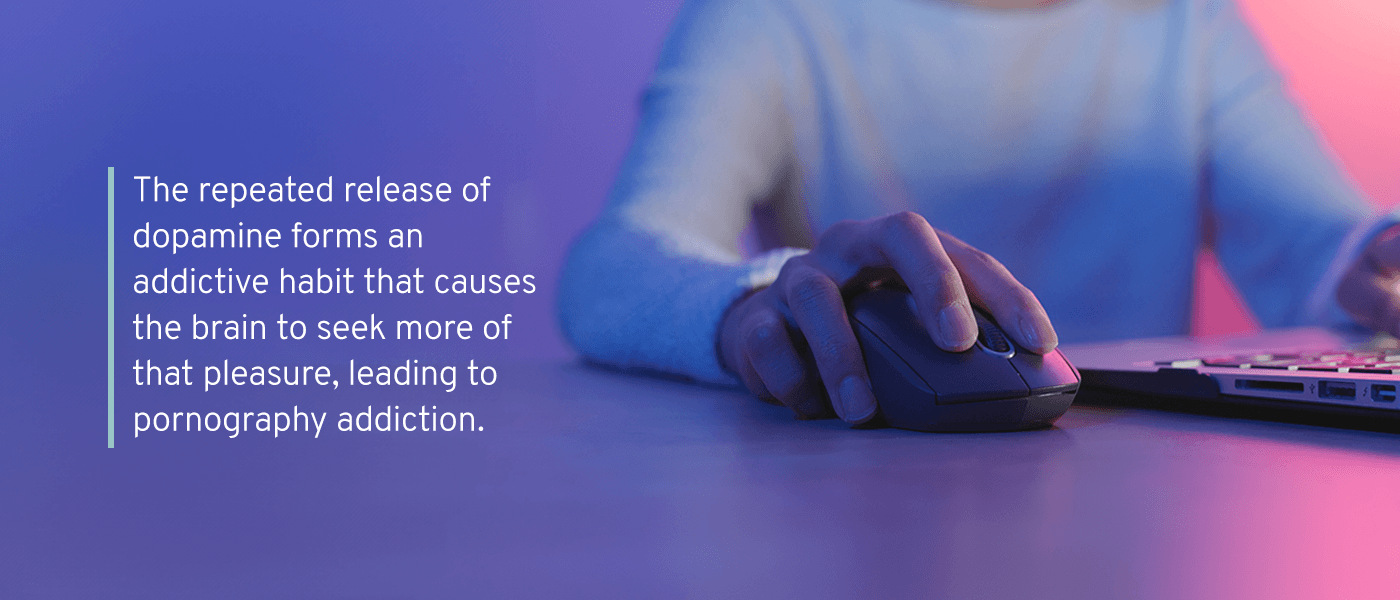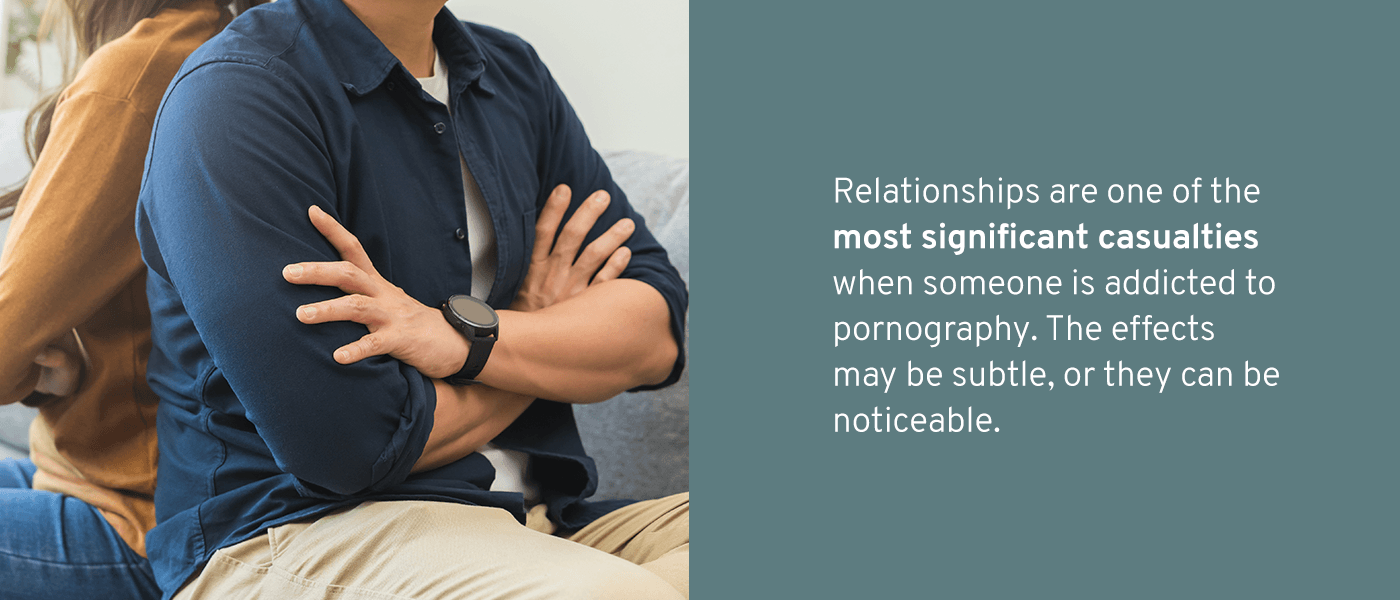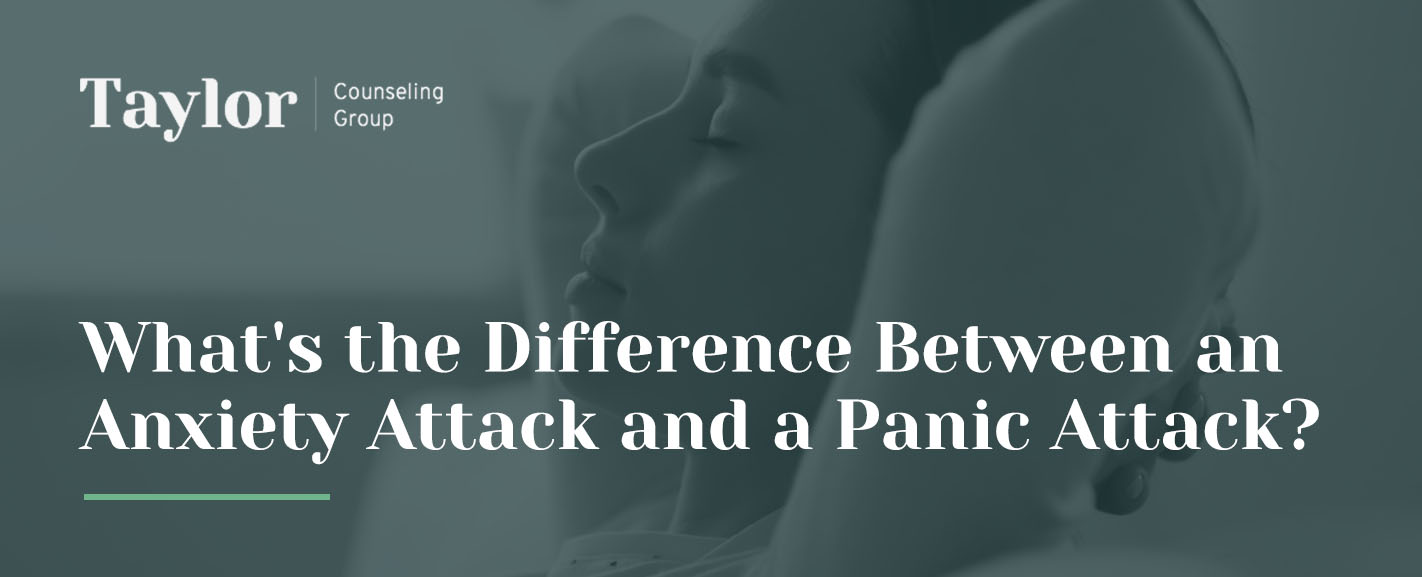Porn addiction is wide-reaching and can have negative implications on a person and their relationships. Learn more about the signs of porn addiction, as well as the long-term effects on an individual’s brain.
Table of Contents
- Understanding Porn Addiction
- Who Watches Pornography?
- Effects of Porn Addiction
- Help Is Available for Porn Addiction
Understanding Porn Addiction
Before learning about the effects of porn addiction, it’s necessary to understand what porn addiction is. Certain factors, like watching porn excessively or having porn interfere with daily life, signal a dependence on porn. The following are also signs of porn addiction:
- Loss of interest in other activities: The need to watch porn trumps other activities and may sometimes overshadow hobbies the person used to enjoy.
- Shame and secrecy: The individual may be secretive because they feel shame regarding their addiction.
- Shunning followed by relapse: People addicted to porn may try to stop engaging with it only for their minds to be consumed by the images. They will resume watching porn, often for extended periods of time.
- Seeking more explicit content: As the brain gets used to watching porn, individuals may seek more explicit content.
- Becoming agitated when confronted: When you confront an individual about pornography, they may become angry or irritated.
- Isolation: The person may isolate themselves to watch porn, often late into the night.
These are some of the crucial signs someone may have an addiction to pornographic materials. However, it’s best to seek guidance to be sure about an addiction.
Schedule An Appointment Online Today
Who Watches Pornography?
Pornography use is widespread among many demographics. Many patients discuss their pornography use, and most who initiate the conversation will avoid eye contact as they bring it up. In a softer-than-normal voice, they’ll first admit they look at porn, and then they’ll begin to hesitantly detail their viewing. Very rarely will there be someone who doesn’t feel embarrassed about using pornography. Many can identify tangible ways it’s affected their life and relationships. Others express extreme fear of being found out. It’s important for them to know there’s no shame in seeking help.
Pornography use is more widespread than we think. According to Ballard Brief, of the millions of websites on the internet, 12% contain pornographic material. Additionally, the use of pornography differs between men and women. A total of 40% of adult women and 69% of adult men watch porn in any given year.
On top of that, Health Research Funding states that 12 to 30 million people in the United States have a sexual addiction. A total of four out of 10 women say they withdraw from their partner emotionally when they find out they watch porn. These numbers are just the tip of the iceberg, but they indicate that many people struggle with watching excessive porn. It’s important to be aware of these statistics, as understanding enables us to empower ourselves to seek help if necessary.
Effects of Porn Addiction
The effects of pornography are first physiological and then relational, meaning it affects the brain before affecting relationships. Viewing pornography releases dopamine in the brain. This release occurs with any sexual stimulation. Since dopamine supplies a sense of pleasure, its release trains the brain to return to the same source to get more of it.
In the context of a relationship, this release of pleasure-inducing dopamine can be a force helping partners return to each other for sexual pleasure. But pornography points the individual back to porn. The repeated release of dopamine forms an addictive habit that causes the brain to seek more of that pleasure, leading to pornography addiction.
Long-Term Effects of Pornography Addiction
If porn is viewed for long periods, dopamine surges can create an unnatural high in the brain, eventually leading to fatigue. Once exhausted, the brain limits its dopamine release, leaving the individual wanting more but unable to reach satisfaction. At this point, the brain has become desensitized.
Desensitization is a result of an individual’s brain reacting to the dopamine dump induced by pornography viewing. Their brain and body become so used to the explicit content that it doesn’t satisfy them anymore.
This means that viewing porn affects our brain structure, which is very disconcerting when we think about the process of becoming desensitized to pornography use. The continual experience of viewing pornography shapes brain structure, which shapes brain function. Pornography shapes who an individual is.
In a widely referenced study from 1988 conducted by Dr. Dolf Zillman and Dr. Jennings Bryant, the effects of porn on family values are clear:
- Watching porn decreases people’s sexual satisfaction.
- The explicit images disconnect people from their genuine relationships.
- Pornographic content lowers people’s views of women.
- Watching porn desensitizes people to cruelty.
- Viewing these images makes people want to watch increasingly explicit pornography.
This study was conducted over only a period of six weeks at strictly one-hour intervals, and the results are staggering. The effects on someone who watches porn every day for hours at a time would be even more prolific than these findings.
Effects of Pornography on Relationships
When exposed to porn for an extended amount of time, people become preoccupied with the images they see in front of them as opposed to their partner in a relationship. This neglect often leads to feelings of loneliness and depression, whereby the other person thinks that their partner doesn’t want them any longer or is not attracted to them.
In the context of a romantic union, the effects of pornography on relationships can be devastating:
- Porn creates an ongoing decrease in sexual desire because it’s very hard for the person watching porn to derive pleasure from their partner. Their brain is more used to porn pleasing them.
- Because one of the effects of pornography is desensitization, the person will want to see more of the material at a higher degree or intensity. This means that keeping them engaged in meaningful intimacy will be challenging.
- A preoccupation with pornography often means the person isn’t as attentive to their partner as they used to be. This isolation creates feelings of doubt and mistrust in a relationship.
- The consequences of porn can have devastating effects on the partner who’s trying to regain their loved one’s affection and attention. They may feel like their partner is cheating and that they’re not good enough.
Relationships are one of the most significant casualties when someone is addicted to pornography. The effects may be subtle, or they can be noticeable. It’s essential to look for these signs and act on them right away, potentially through sex or pornography addiction counseling.
Help Is Available for Porn Addiction
Pornography is damaging and addicting. If you or someone you love is struggling with pornography use, we at Taylor Counseling Group can assist you. We’re ready to walk with you in your journey to freedom from addiction and are committed to providing support. Whether you would benefit from support groups, accountability partners or therapy, you can get helpful support from Taylor Counseling Group. Our affordable and accessible services include therapy focused on recovery from pornography. Please get in touch with us online for more information or to book an appointment. You can schedule online at any time.
Additional Resources & Related Articles:









